ARTICLE AD BOX
Paul Kirby
Reporting from Auschwitz

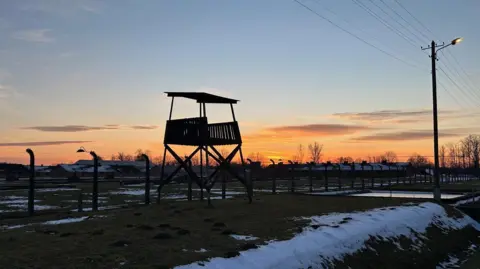 BBC
BBC
Conditions at Birkenau are harsh in January and organisers have erected a tent on the site to protect them
About 50 survivors of the Nazi death camp at Auschwitz-Birkenau will return to the site on Monday to remember the day it was finally liberated on 27 January 1945.
They will be joined by heads of state including King Charles and other European royalty, Emmanuel Macron of France and German President Frank-Walter Steinmeier.
But it will be the survivors - most in their late 80s and 90s - not the dignitaries, whose voices will be heard during the commemorations at the camp, where 1.1 people were murdered, most of them Jews.
Their message is to tell the world what happened here and ensure that it never happens again.
"Every soul on this earth has the right to live," says Jona Laks, who is now 94 and arrived with her twin and elder sisters in 1944. "Auschwitz was a laboratory for killing people. This was its task and it proved itself: few survived Auschwitz."

 Claims Conference
Claims Conference
Jona Laks, now 94, survived the medical experiments of Josef Mengele at Auschwitz
Although daytime temperatures in recent days have climbed well above freezing and much of the snow has melted, many of the 50 arriving for Monday's commemorations are now too frail to stay in the open for long.
Instead, an enormous, heated tent has been erected over the "Death Gate", as the entrance to Birkenau is known.
The day will begin with survivors and Polish President Andrzej Duda laying a wreath at "Death Wall" at the first Auschwitz camp, where thousands of Polish prisoners, Jews and Soviet prisoners of war were shot.
Later, the scene will move to the death camp at Birkenau, known as Auschwitz II.
Each big anniversary to mark the camp's liberation by Soviet troops is different. Thirty years ago, there was far less international interest, as renowned writer Elie Wiesel led a large group of fellow survivors and relatives to one of the crematoria blown up by the Nazis before they fled.

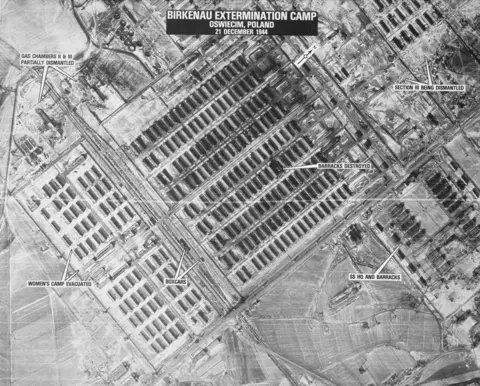 US States Holocaust Memorial Museum
US States Holocaust Memorial Museum
This aerial photo of Birkenau from December 21 1944 shows how the Nazis had already begun to destroy the gas chambers and crematoria
German historian Susanne Willems speaks lovingly of the survivors she has met over several decades: "Many were like favourite grandfathers to me. Of course we've lost many of them and it's my duty to carry on and become their witness."
There will be no political speeches from international leaders beside the Death Gate, and no Russian presence because of the full-scale war launched against Ukraine almost three years ago, even though the camp was liberated by the Russian-dominated 60th Army of the First Ukrainian Front.
Vladimir Putin attended the 60th anniversary; he is not welcome now.
The Nazis' decision to wipe out Europe's Jewish population in extermination camps went into operation early in 1942. Six were built in occupied Poland: at Chelmno, Belzec, Sobibor, Treblinka, Majdanek and Auschwitz-Birkenau.
Treblinka was far smaller than Auschwitz, and yet 800,000-850,00 Jews were murdered there in a far shorter period.
Heinrich Himmler, supreme chief of the dreaded SS, and camp commandant Rudolf Höss oversaw the expansion of the Auschwitz complex to construct a second camp at Birkenau for industrial murder.
By the end of 1942 there were four separate gas chambers and crematoria.

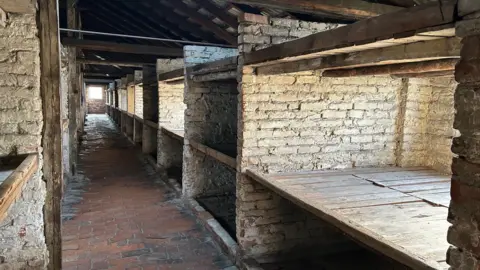
Some of the blocks for the Nazis' prisoners at Auschwitz-Birkenau are still intact
The first mass deportations of Jews to Birkenau came from Slovakia and France in March 1942, and then in July from the Netherlands and Belgium as well, walking under that sign and on to their deaths.
Soon trains would arrive at Birkenau at a specially constructed ramp, a short distance away from two gas chambers and at one point 12,000 Jews were being gassed and their bodies burned every day.
Jona Laks had already lost her parents at Chelmo and arrived in 1944 with her twin sister Miriam and elder sister Chana from the Lodz ghetto further north.
"I was ordered to go to the left, which meant the crematorium, whereas my twin was sent to the right. That was only because the man was so bored, he would say 'Left, right, left, right' not even looking at the the people. I didn't know that left meant death, but I did know it wasn't good," she told the BBC.

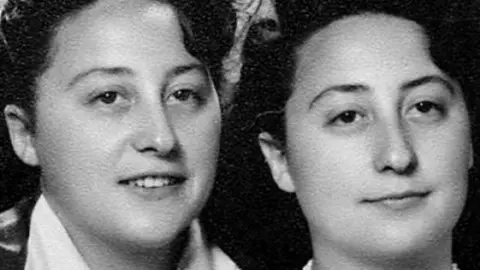 Jona Laks
Jona Laks
Jona Laks (L), with twin sister Miriam, survived the Lodz Ghetto, Auschwitz and the death march
Eighty to 90% of new arrivals were sent to their deaths while others were selected for slave labour. "I was already very close to the gate; I could see the sparks, fire coming out of the chimneys and I could even feel the smell of burned flesh."
Jona Laks was saved only because her elder sister shouted out that she should not be separated from her twin and word reached the infamous Nazi "Angel of Death" at the camp, Josef Mengele, who used part of Birkenau for often deadly medical experiments on twins.
Women and children, the elderly and infirm were sent immediately to the gas chambers. My own grandfather, on the first Dutch transport, survived slave labour for a month and a day, until 18 August 1942.
His sister, Geertje van Hasselt, her school headteacher husband Simon, and their two daughters Hermi, 14 , and nine-year-old Sophia were murdered on arrival on 12 February 1943.

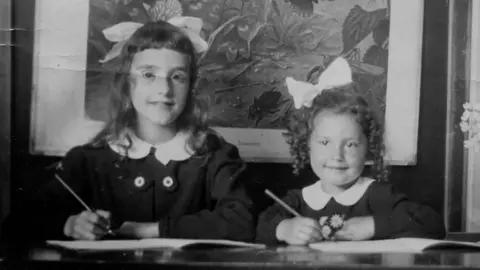
Hermi van Hasselt was 14 when she was murdered, her sister Sophia was nine
Almost a million European Jews were murdered here from 1941 to 1945. But the dead also include some 70,000 Polish prisoners, 21,000 Roma and 15,000 Soviet prisoners of war, and an unknown number of gay men.
Auschwitz drew 1.83 million visitors last year and although it is closed for the commemoration large numbers walked around the museum spread out in many of the old blocks across Auschwitz 1 at the weekend, and then the desolate, sprawling site of Birkenau.
The scale of the site is daunting. The remains of many of the blocks are cordoned off, with brick foundations all that is left as you peer into the distance. But the ruins of two gas chambers and crematoria remain, blown up as the Nazis sought to destroy the evidence.
"It makes you feel anxious being here. You don't realise how sad it is until you see it," said a young woman with a group of friends from Lancashire, all aged 18.

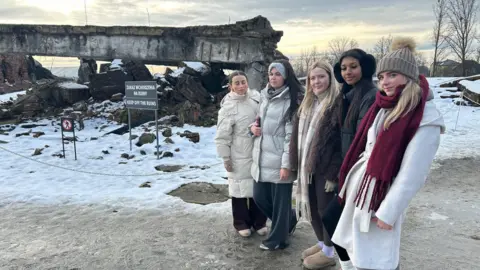
Abigail, Siah, Molly, Eve and Millie visited the site of the Birkenau death camp at the weekend
"Obviously you learn about it, but it's crazy when you see it in real life," said another. "It's crazy to think that some people don't think it exists."
Far-right parties have made big advances in several European countries, not least in Germany, where the Alternative für Deutschland (AfD) is in second place in opinion polls ahead of next month's election.
Historian Susanne Willems, who has for years brought groups to Auschwitz, last week took a group of police from Berlin to Auschwitz to explain the rise of Nazism and how any military-type of hierarchy runs the risk of moving into authoritarianism.
"I'm doing this work to help these people have a clear understanding of what the limits of police action need to be, and that whatever they're asked to do, it remains their own decision whether to obey or not; and that they have the right, in fact the duty, to refuse anything that is, from their understanding, against human rights."

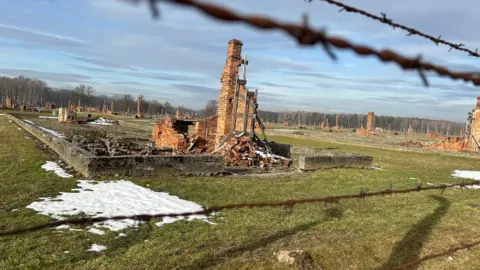
The ruins of the sprawling Birkenau site stretch far into the distance
Among those who are not in Poland for the commemoration is Italy's best-known living Auschwitz survivor, Liliana Segre, 94, who will instead be taking part in events in Rome.
A lifelong senator, Segre receives police protection because of a torrent of antisemitic abuse, which has hit a new level on social media since a documentary was released this month on her life.
Her father and grandparents were all murdered at Birkenau, but like Jona Laks she survived the Nazis' death march to Malchow near the Ravensbrück concentration camp as a teenage girl.
"[Segre] often tells me 'I'm tired of the insults'," says the head of Milan's Holocaust memorial, Roberto Jarach.

 3 months ago
23
3 months ago
23
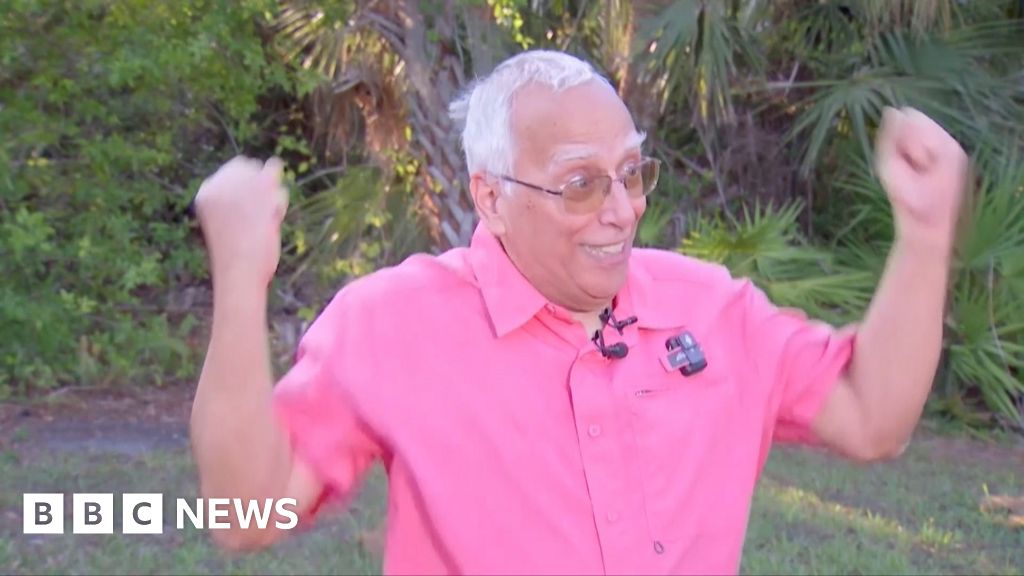
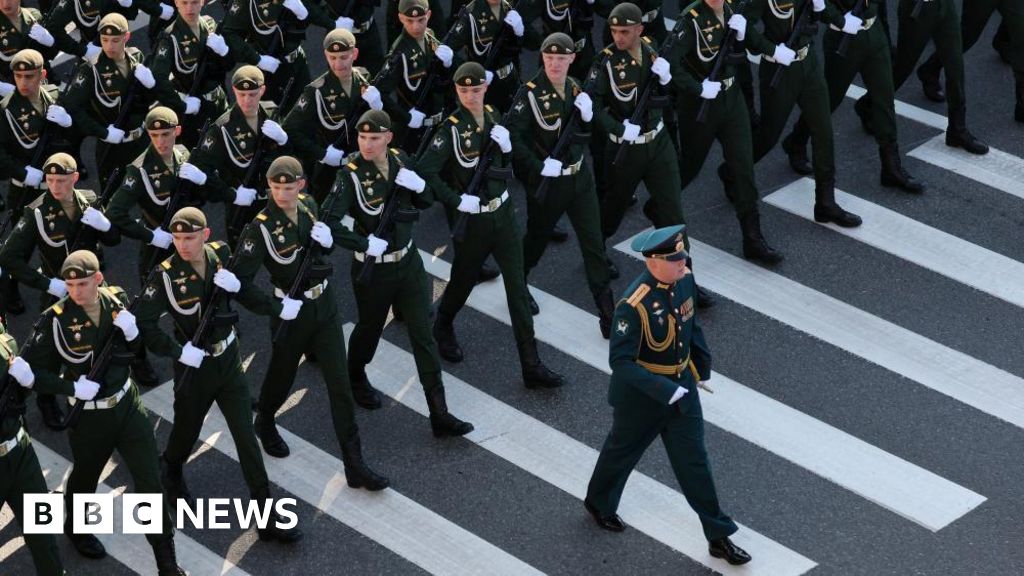
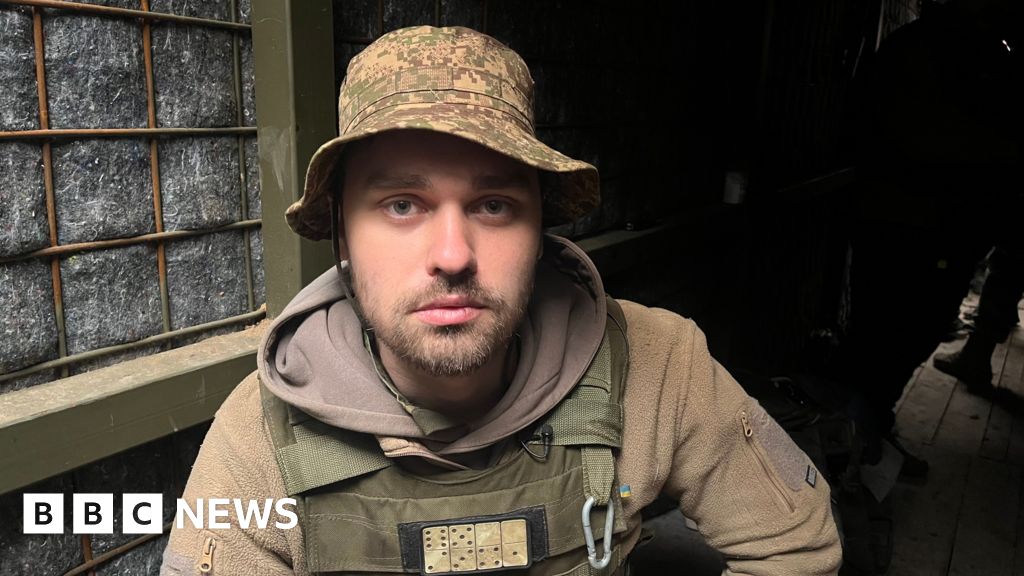





 English (US) ·
English (US) ·